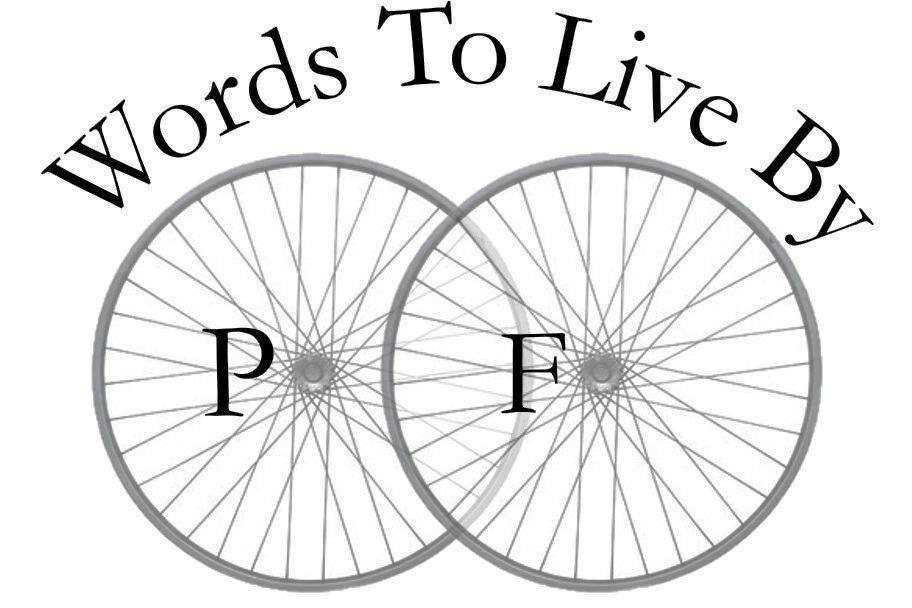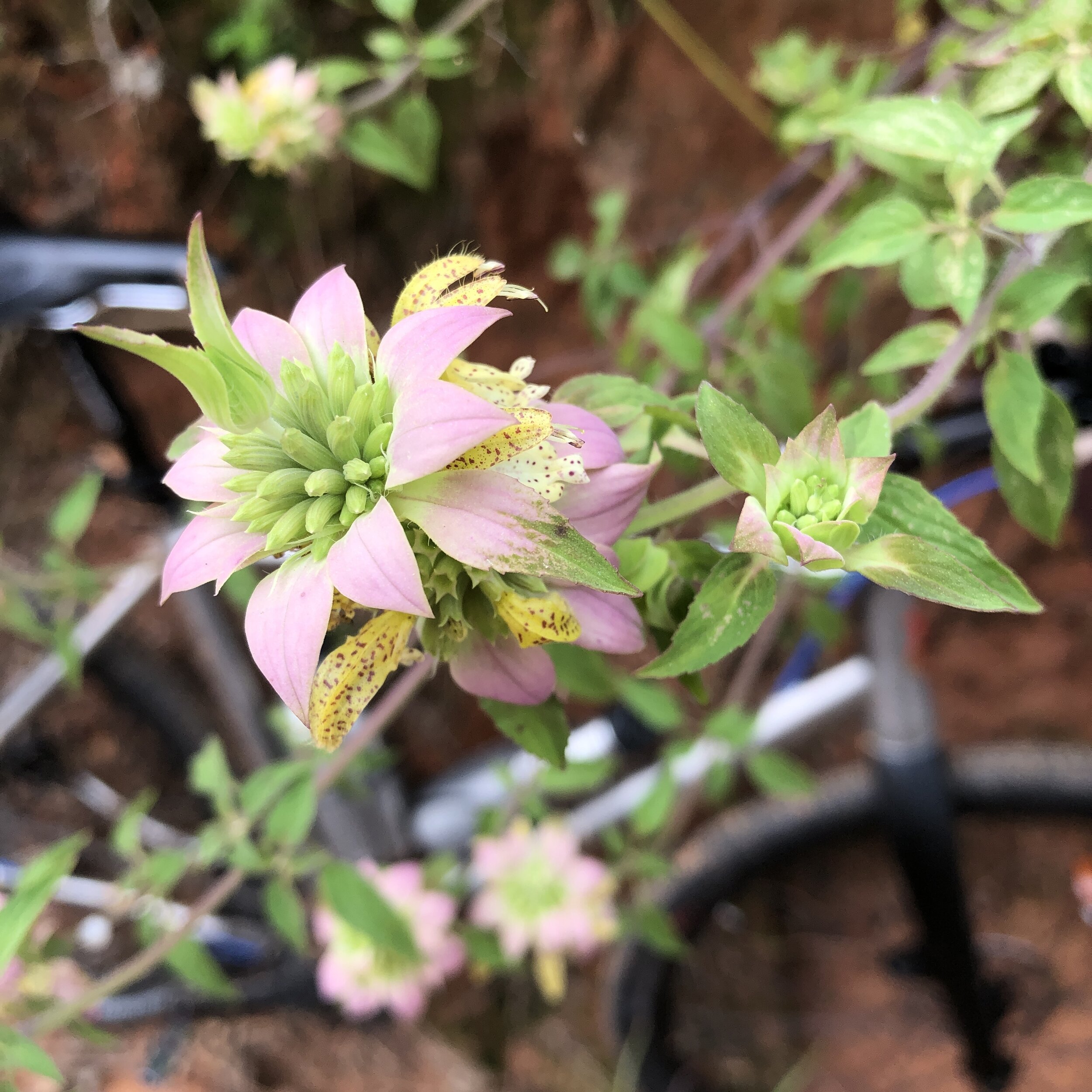On Riding & Writing Well
It was a ride of discovery, finding gold coins all along the way.
Roy Peter Clark, legendary writing coach at The Poynter Institute, taught newspaper reporters to drop gold coins at regular intervals throughout their stories as gifts for readers and inducements to continue on.
“Think of a gold coin as any bit that rewards the reader. A good start is its own reward, and crafty writers know enough to put something shiny at the end, a final reward, and invitation for the readers to return to their work. But what about the territory between beginning and end? With no gold coins for motivation, the reader may drift out of the forest,” Mr. Clark wrote in “Writing Tools: 55 Essential Strategies for Every Writer.”
The same is true of bicycle riding. These figurative gold coins keep me pedaling, rather than reading. It does not take much, but such revealed gems are effective for me to stay strong and hammer on through the end of the longest ride on the hottest day. One recurring instance has been the appearance of St. Joe Paper Company land monuments (read about them here), but I’ve not seen any on the dirt roads of South Georgia and likely will not. The experience of discovery, though, also serves to get me back on the bike the next time, no matter how sore my arse.
From Metcalf to Boston in a back-roads loop through South Georgia is a world-class ride, a peak cycling experience full of iconic scenery, thrilling descents, bursts of flowers, splashing traverses, all carried along on the wings of thousands of exploding-into-flight butterflies.
Red clay, blue sky, green leaves, spotted yellow beebalm blooms, and tunnels of oak branches canopied over the road make for top-shelf pedaling. Doves flushed. Red-cockaded woodpeckers hammered. Bluebirds flitted. Hawks surveilled on the wing.
Fillings were rattled out of my teeth, gritty orange slop was splattered upon my shins and chin, and sand shifted beneath my fishtailing rear wheel.
These rides are voyages of discovery. This was true on the road but it is more so with the gravel bike and the red clay roads – it seems much more out in the wilds, even when it’s manicured plantation property or cultivated farms. There is less traffic, more birdsong and frog trill, more hazards I can attack rather than be the target of. (Let me be clear: I’d rather be on the offense to get after 10 inches of moving water, soft and shifty dirt, or washboard hardpan on a descent than defend against a two-ton weapon wielded by someone I can’t control or protect myself against.)
Delight is a beautiful thing, wonderful to experience. When I am delighted, I involuntarily laugh. I stop and turn around. I need to remind myself to breathe. I must reach out to touch and make sure it’s all real. There are seasons of delight, with regular stops on the calendar. Even when expected, though, these are such a wonder they still inspire awe.
I’ll always stop for certain blooms, they invariably stop me in my tracks and merit a photo. Butterfly weed. Passion flower. Buttonbush. Hurricane lily. Indian blanket. Spotted beebalm. You can see all of those favorites in the Blooms gallery on the site.
There was a beautiful profusion of beebalm on the most recent ride. Last year I missed the peak by a few days and the spotted bracts were browning, leaf axils were chewed on, and the stems were drooping. But out on the canopy roads these sprays of beebalm were growing atop the embankment and clinging vertically to the red-clay. What a joy it is to find the beebalm in full flower, an unexpected display of beauty and idiosyncrasy. What a delight.
There are elements of one-time discovery, intelligence-gathering findings of fact. Lower Boston Road, for instance, is not paved all the way into its eponymous destination. Instead, it’s paved less than a mile and a half. In this way, the moving water across Hicks Road was not a surprise – though it was deeper than the week before, but the line I chose was a bunch better. It needed to be with the water up over my ankles. The Aucilla, bank full and then some, was a discovery –two navigable channels distinct from the general swamp bottom it had become with all the rain.
And then there was the Carnegie Library. I’d been in Boston a half dozen times, including once 5 years ago when I wanted to vomit on a soon-to-tank century ride on the road. It’s a tiny town of 1,300 and a sneaky, pleasant merchant’s row of brick structures of the usual Klassy kind offering the wares expected of a more cosmopolitan spot, a place where the artisanally thrown ceramic cream and sugar service is sold in a modern building distressed artificially to evidence the character come by honestly on Main Street Boston.
I came in from the southwest, pedaled north toward the downtown district and noticed first the double spires of Boston United Methodist and the curious dome of Boston Baptist. At last I caught sight between the two a Carnegie Library, one of the more than 2,500 built throughout the globe, though chiefly in the United States with the financial support of Andrew Carnegie, steel magnate and prototype of American noblesse oblige. It’s a beautiful building with blond brick, columns, and a Greek Revival aspect writ small. This example was built in 1914. The champions of Boston’s library claim, credibly, this Carnegie Library is in the smallest community in the nation to be recipients of Mr. Carnegie’s grant. There were 1,315 people counted as resident in Boston during the 2010 U.S. Census, a population estimated to have grown to 1,317 in 2019. Boston is a majority minority city.
Their Carnegie Library should be a point of pride. My limited knowledge of the Carnegie model leads me to conclude it’s a good thing – the grants required local commitment of cash, staff, and a shared mission.
I was not expecting to encounter a Carnegie Library when I started out pedaling. That’s the point, innit?
Wonder at every turn. Delight at each unexpected revelation. Gratitude for the means to explore. These are the golden coins of good writing and the elements of successful cycling both. It keeps me pedaling.



